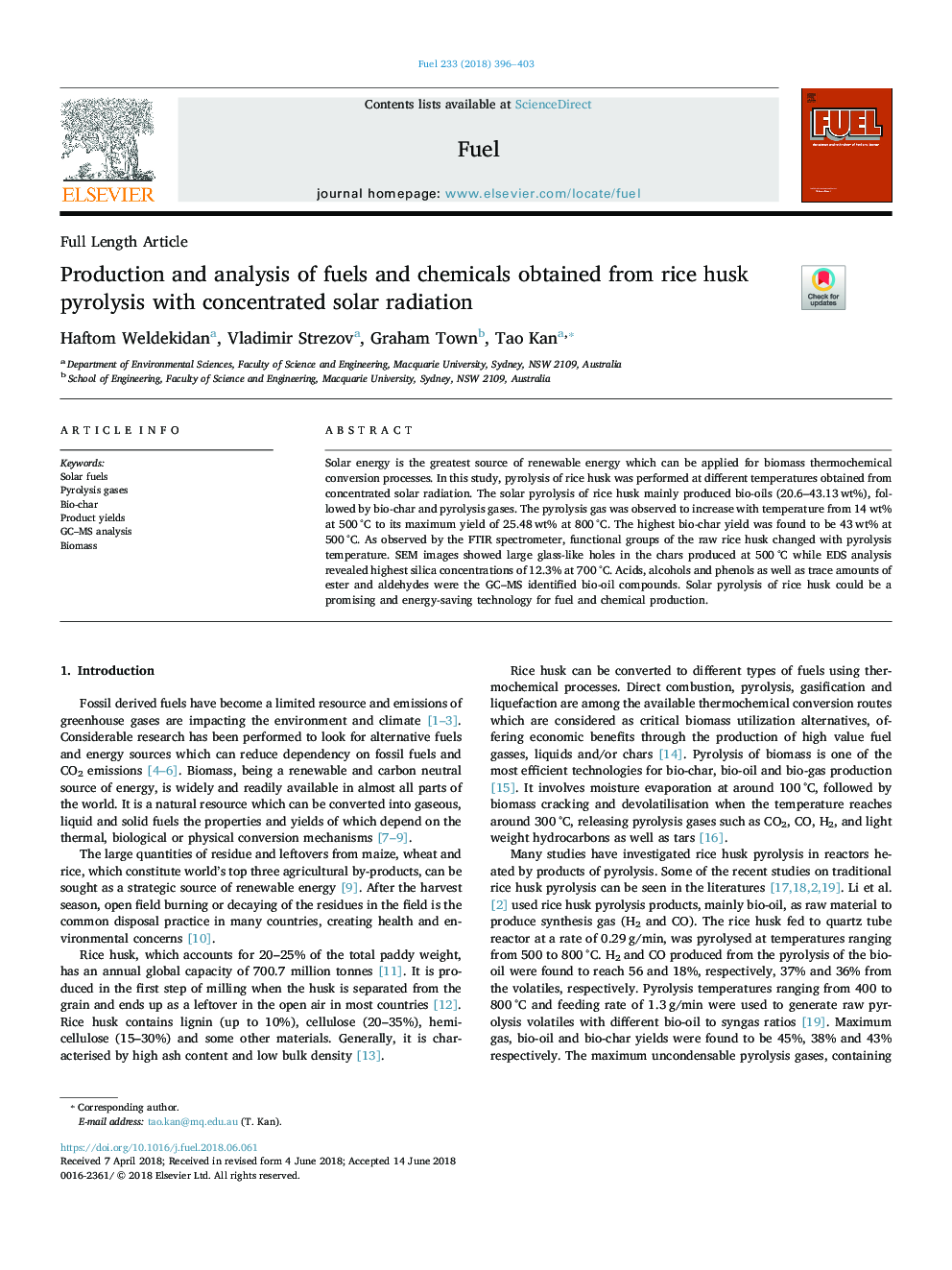| Article ID | Journal | Published Year | Pages | File Type |
|---|---|---|---|---|
| 6630233 | Fuel | 2018 | 8 Pages |
Abstract
Solar energy is the greatest source of renewable energy which can be applied for biomass thermochemical conversion processes. In this study, pyrolysis of rice husk was performed at different temperatures obtained from concentrated solar radiation. The solar pyrolysis of rice husk mainly produced bio-oils (20.6-43.13â¯wt%), followed by bio-char and pyrolysis gases. The pyrolysis gas was observed to increase with temperature from 14â¯wt% at 500â¯Â°C to its maximum yield of 25.48â¯wt% at 800â¯Â°C. The highest bio-char yield was found to be 43â¯wt% at 500â¯Â°C. As observed by the FTIR spectrometer, functional groups of the raw rice husk changed with pyrolysis temperature. SEM images showed large glass-like holes in the chars produced at 500â¯Â°C while EDS analysis revealed highest silica concentrations of 12.3% at 700â¯Â°C. Acids, alcohols and phenols as well as trace amounts of ester and aldehydes were the GC-MS identified bio-oil compounds. Solar pyrolysis of rice husk could be a promising and energy-saving technology for fuel and chemical production.
Related Topics
Physical Sciences and Engineering
Chemical Engineering
Chemical Engineering (General)
Authors
Haftom Weldekidan, Vladimir Strezov, Graham Town, Tao Kan,
